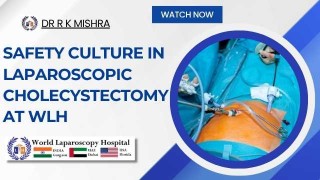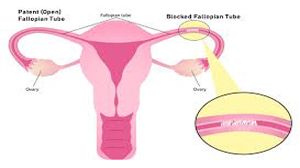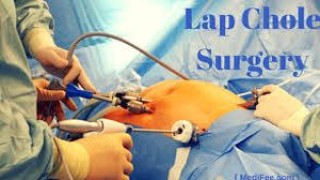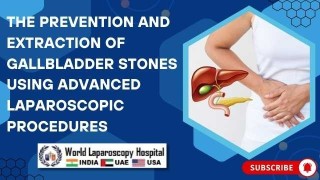Advanced Precision: Laparoscopic Hernia Repair with Large Sac TAPP Technique
Add to
Share
1,219 views
Report
2 years ago
Description
When it comes to hernia repairs, advanced surgical techniques are revolutionizing the field, offering improved outcomes and faster recoveries for patients. One such technique gaining recognition is laparoscopic hernia repair with the large sac transabdominal preperitoneal (TAPP) approach. This state-of-the-art procedure combines the benefits of laparoscopic surgery with the use of a large sac to address complex hernias, providing advanced precision and optimal results. Laparoscopic hernia repair has emerged as a preferred alternative to traditional open surgery due to its minimally invasive nature. This technique involves making small incisions through which a laparoscope, a thin tube with a camera and specialized instruments, is inserted into the abdomen. The laparoscope provides enhanced visualization, allowing surgeons to navigate with precision and perform the repair with greater accuracy. Compared to open surgery, laparoscopic hernia repair offers several advantages, including reduced post-operative pain, quicker recovery, and smaller incisions, resulting in minimal scarring. The large sac transabdominal preperitoneal (TAPP) technique adds a new dimension to laparoscopic hernia repair. In this approach, a larger mesh or sac is used to reinforce the hernia defect, providing additional support and stability. The TAPP technique involves accessing the hernia from the inside of the abdominal cavity, carefully dissecting and reducing the hernia contents, and placing the mesh over the defect to strengthen the abdominal wall. This comprehensive approach ensures effective repair and reduces the risk of recurrence. The large sac utilized in the TAPP technique allows for improved visualization and maneuverability during the procedure. Surgeons can more accurately assess the hernia defect, surrounding structures, and potential complications, enabling precise placement of the mesh and meticulous closure of the hernia sac. By addressing both the hernia and the underlying anatomical abnormalities, laparoscopic hernia repair with the large sac TAPP technique offers a comprehensive solution, leading to enhanced patient outcomes. The advantages of laparoscopic hernia repair with the large sac TAPP technique extend beyond the surgical procedure itself. Patients who undergo this advanced approach often experience reduced post-operative pain, shorter hospital stays, and faster recovery times. The smaller incisions result in minimal scarring and improved cosmetic outcomes. Moreover, the reduced risk of complications and hernia recurrence provide long-term benefits and peace of mind. It is important to note that laparoscopic hernia repair with the large sac TAPP technique requires the expertise of skilled surgeons with extensive experience in minimally invasive procedures. Consulting with a knowledgeable healthcare professional is crucial to determine the most suitable approach for your specific hernia condition. They will evaluate your medical history, perform thorough examinations, and guide you through the treatment options, ensuring the best course of action tailored to your individual needs. In the realm of hernia repairs, advanced surgical techniques are reshaping the landscape of treatment options, offering patients improved outcomes and a quicker path to recovery. One such technique gaining recognition is laparoscopic hernia repair with the large sac transabdominal preperitoneal (TAPP) approach. This cutting-edge procedure combines the advantages of laparoscopic surgery with the utilization of a large sac, resulting in advanced precision and optimal results for patients requiring hernia repair. Laparoscopic hernia repair has emerged as a preferred alternative to traditional open surgery due to its minimally invasive nature. This technique involves making small incisions through which specialized instruments and a laparoscope, a thin tube equipped with a camera, are inserted. The laparoscope provides surgeons with enhanced visualization, allowing them to navigate with precision and perform the repair with greater accuracy. Compared to open surgery, laparoscopic hernia repair offers numerous benefits, including reduced post-operative pain, faster recovery, and smaller, cosmetically appealing incisions. The large sac transabdominal preperitoneal (TAPP) technique takes laparoscopic hernia repair to the next level. In this approach, a larger mesh or sac is used to reinforce the hernia defect, providing added strength and stability. The TAPP technique involves accessing the hernia from inside the abdominal cavity, carefully dissecting and reducing the hernia contents, and positioning the mesh over the defect to strengthen the abdominal wall. This comprehensive approach ensures an effective repair and minimizes the risk of recurrence. The use of a large sac in the TAPP technique offers notable advantages. It allows for improved visualization and maneuverability during the procedure, enabling surgeons to thoroughly assess the hernia defect, surrounding structures, and potential complications. This enhanced visualization facilitates precise mesh placement and meticulous closure of the hernia sac, contributing to a successful repair and reducing the likelihood of complications. Beyond the surgical procedure itself, laparoscopic hernia repair with the large sac TAPP technique offers additional benefits to patients. The minimally invasive nature of the procedure results in reduced post-operative pain, shorter hospital stays, and faster recovery times. The smaller incisions lead to minimal scarring and improved cosmetic outcomes. Furthermore, the reduced risk of complications and hernia recurrence provides patients with long-term peace of mind and a restored sense of well-being. It is important to note that laparoscopic hernia repair with the large sac TAPP technique should be performed by experienced surgeons who specialize in minimally invasive procedures. Consultation with a knowledgeable healthcare professional is essential to determine the most appropriate treatment approach for your specific hernia condition. They will conduct a thorough evaluation, take into account your medical history and individual needs, and guide you towards the best course of action. In the realm of hernia repairs, a groundbreaking surgical approach is revolutionizing the way complex hernias are treated. Laparoscopic hernia repair with the large sac transabdominal preperitoneal (TAPP) technique offers advanced precision and optimal outcomes for patients. This state-of-the-art procedure combines the advantages of laparoscopic surgery with the utilization of a large sac, providing enhanced visualization and meticulous repair of the hernia defect. It is important to consult with a skilled surgeon who specializes in laparoscopic hernia repair with the large sac TAPP technique to determine the suitability of this procedure for your specific hernia condition. They will conduct a comprehensive evaluation, consider your individual needs and medical history, and provide personalized recommendations to ensure the best possible outcome. In summary, laparoscopic hernia repair with the large sac TAPP technique offers advanced precision and optimal outcomes for patients with complex hernias. By combining the benefits of laparoscopic surgery with the use of a large sac, this state-of-the-art procedure provides enhanced visualization, meticulous repair, reduced post-operative pain, and minimized risk of hernia recurrence. Consult with a healthcare professional to explore this advanced technique and experience the benefits of advanced precision in hernia repair.
Similar Videos






